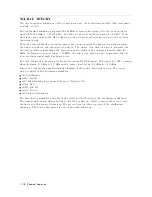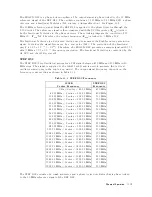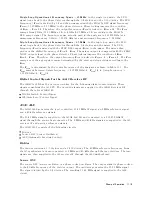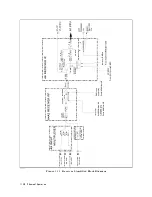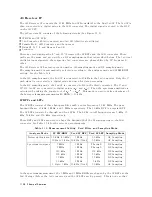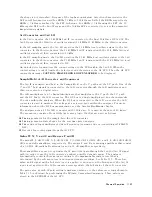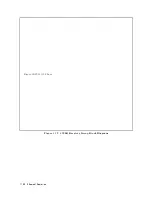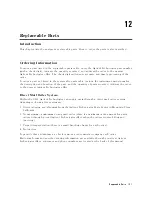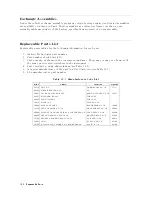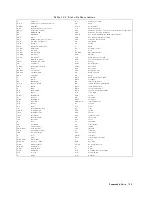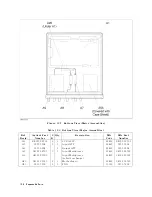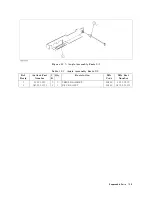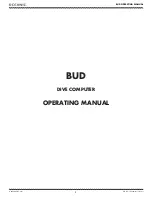
A8
Input
Attenuator
The
A8
input
attenuator
is
a
10
dB
step
attenuator
(0
dB
to
60
dB)
with
a
maximum
input
level
of
+30
dBm.
It
is
used
only
in
the
spectrum
analyzer
mode
.
The
RF
input
signal
from
the
S
input
is
routed
to
the
A4A2
Receiver
RF
through
A8.
A8
is
used
to
control
the
input
signal
level
to
the
st
mixer
in
A4A2.
The
A8
setting
can
be
controlled
from
the
front
panel
by
changing
the
attenuation
setting
directly
or
by
changing
the
reference
level
in
the
auto
attenuation
mode
.
A8
consists
of
three
segments
(10
dB
,
20
dB
,
and
30
dB).
Attenuation
from
0
dB
to
60
dB
is
obtained
by
combining
one
(or
more)
of
the
three
segments
.
Each
segment
is
activated
by
a
TTL
signal
from
the
A2
post-regulator
.
The
TTL
signals
are
controlled
by
the
A1
CPU
.
A9
Input
Multiplexer
The
A9
multiplexer
multiplexes
the
RF
signals
from
inputs
R,
A,
and
B
to
the
A4A2
receiver
RF
.
A9
is
primarily
used
in
the
network
analyzer
mode
.
However
,
it
can
be
used
in
the
spectrum
analyzer
mode
when
the
spectrum
monitoring
function
of
the
R,
A,
or
B
input
is
used.
A9
consists
of
three
xed
attenuators
and
a
multiplexer
.
See
Figure
11-7.
The
R
input
signal
is
attenuated
by
30
dB
and
then
routed
to
A4A2
through
the
multiplexer
.
The
A
and
B
input
signals
are
attenuated
by
6
dB
and
then
routed
to
A4A2
through
the
multiplexer
.
A9
has
very
low
signal
leakage
between
any
two
of
the
three
inputs
.
The
input
crosstalk
performance
of
the
analyzer
is
mainly
determined
by
A9.
In
addition,
the
input
impedance
performance
for
the
R,
A,
and
B
inputs
is
determined
by
A9
because
each
input
connector
is
in
A9.
A4A2
Receiver
RF
The
A4A2
receiver
RF
converts
the
RF
input
signal
from
A8
or
A9
to
the
21.42
MHz
2nd
IF
.
The
2nd
IF
is
routed
to
the
A6
receiver
IF
.
The
A4A2
receiver
RF
consists
of
the
following
circuits
(See
Figure
11-7 ):
NA/SA
Switch
1st
Converter
2nd
Converter
A
uto
Zero
Switch
The
RF
signals
from
A8
or
A9
go
to
the
NA/SA
switch.
In
the
switch,
one
of
the
signals
is
routed
to
the
1st
converter
and
then
to
the
second
converter
.
In
the
rst
converter
,
the
RF
signal
(2
Hz
to
1.8
GHz
in
the
spectrum
analyzer
mode
and
100
kHz
to
1.8
GHz
in
the
network
analyzer
mode)
is
mixed
with
the
1st
local
oscillator
signal
(2.058580002
GHz
to
3.85858
GHz
in
the
spectrum
analyzer
mode
and
2.05868
GHz
to
3.85858
GHz
in
the
network
analyzer
mode)
from
A4A1
and
then
converted
to
the
2.05858
GHz
1st
IF
through
the
band
pass
and
low
pass
lters
.
In
the
second
converter
,
the
1st
IF
is
mixed
with
the
2.08
GHz
second
local
oscillator
signal
from
A3A2.
This
converts
it
to
the
21.42
MHz
second
IF
through
the
low
pass
lters
.
The
21.42
MHz
second
IF
is
routed
to
A6
through
the
auto-zero
switch.
The
auto-zero
switch
is
used
for
an
auto-zero
detection.
The
analyzer
performs
auto-zero
detection
automatically
to
measure
the
oset
error
on
the
signal
path
in
the
A6
receiver
IF
.
It
then
compensates
the
measured
value
with
the
detected
oset
error
.
In
auto-zero
detection,
the
input
signal
to
the
A6
receiver
IF
is
grounded
in
the
auto-zero
switch.
Theory
of
Operation
11-25
Summary of Contents for Agilent 4396B
Page 10: ......
Page 32: ......
Page 43: ...Figure 2 7 CAL OUT Level Adjustment Location Adjustments and Correction Constants 2 11 ...
Page 46: ...Figure 2 10 Comb Generator Output 2 14 Adjustments and Correction Constants ...
Page 62: ...Figure 2 26 Final Gain Adjustment Location 2 30 Adjustments and Correction Constants ...
Page 76: ...Figure 3 1 Troubleshooting Organization 3 2 T roubleshooting ...
Page 84: ......
Page 90: ...Figure 5 1 Power Supply Lines Simpli ed Block Diagram 5 2 Power Supply T roubleshooting ...
Page 107: ...Figure 5 12 Power Supply Block Diagram 1 Power Supply T roubleshooting 5 19 ...
Page 108: ...Figure 5 13 Power Supply Block Diagram 2 5 20 Power Supply T roubleshooting ...
Page 109: ...Figure 5 14 Power Supply Block Diagram 3 Power Supply T roubleshooting 5 21 ...
Page 110: ......
Page 112: ...Figure 6 1 Digital Control Group Simpli ed Block Diagram 6 2 Digital Control T roubleshooting ...
Page 124: ......
Page 126: ...Figure 7 1 Source Group Block Diagram 7 2 Source Group T roubleshooting ...
Page 160: ...Figure 8 1 Receiver Group Simpli ed Block Diagram 8 2 Receiver Group T roubleshooting ...
Page 168: ......
Page 184: ...Figure 10 6 External Test Setup 1 Figure 10 7 External Test Setup 2 10 10 Service Key Menus ...
Page 185: ...Figure 10 8 External Test Setup 3 Figure 10 9 External Test Setup 4 Service Key Menus 10 11 ...
Page 226: ...Figure 11 3 Power Supply Functional Group Simpli ed Block Diagram 11 6 Theory of Operation ...
Page 231: ...Figure 11 5 Digital Control Group Simpli ed Block Diagram Theory of Operation 11 11 ...
Page 235: ...Figure 11 6 Source Simpli ed Block Diagram Theory of Operation 11 15 ...
Page 244: ...Figure 11 7 Receiver Simpli ed Block Diagram 11 24 Theory of Operation ...
Page 249: ...Figure IDC5S11001 here Figure 11 8 4396B Source Group Block Diagram Theory of Operation 11 29 ...
Page 254: ...Figure 12 1 Top View Major Assemblies 12 4 Replaceable Parts ...
Page 290: ...Figure 12 36 Main Frame Assembly Parts 17 19 12 40 Replaceable Parts ...
Page 294: ......
Page 308: ......
Page 311: ...Figure C 1 Power Cable Supplied Power Requirement C 3 ...
Page 312: ......
Page 324: ......




